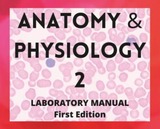
Laboratory manual for undergraduate Anatomy & Physiology 2
- Subject:
- Anatomy/Physiology
- Biology
- Health, Medicine and Nursing
- Material Type:
- Activity/Lab
- Reading
- Teaching/Learning Strategy
- Textbook
- Author:
- Julie Robinson
- Date Added:
- 07/30/2022

Laboratory manual for undergraduate Anatomy & Physiology 2

ISCI547a Edition
Word Count: 282810
(Note: This resource's metadata has been created automatically by reformatting and/or combining the information that the author initially provided as part of a bulk import process.)
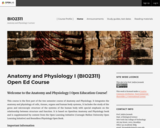
This course is the first part of the two semester course of Anatomy and Physiology. It integrates the anatomy and physiology of cells, tissues, organs and human body systems, It includes the study of the gross and microscopic structure of the systems of the human body with special emphasis on the relationship between structure and function. It is based on OpenStax Anatomy and Physiology book and is supplemented by content from the Open Learning Initiative (Carnegie Mellon University Open Learning Initative) and Boundless Physiology Open Book.
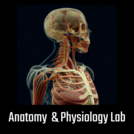
Unlock Human Anatomy in VR! "Anatomy & Physiology Lab" offers immersive learning. Dive into the intricate Skeletal Lab, explore cranial and facial bones in the Skull Lab, and feel the heart's rhythm in the Heart Lab. Enjoy VR experiments and interactive modules. Embark on your educational adventure today and uncover the wonders of the human body!
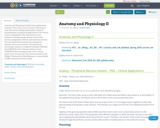
Anatomy and Physiology II syllabi and supplemental materials. This course covers a survey of the human body that stresses biological principles, chemical interpretations, and physical applications at the various levels of organization. The class lectures cover embryonic and physiologic theories of muscular, nervous, integument, skeletal, and endocrine systems. The class laboratories examine the integument, skeletal, and nervous systems. The department encourages students to complete Principles of Biology II/Lab (BIO102) and/or Chemical Science I/Lab (CHM110) before enrolling in this course. Course meets: 3 hrs. lecture; 3 hrs. lab. Course materials by Dr. Phillip T. Wong and Dr. Mark Beaumont, content added to OER Commons by Victoria Vidal.
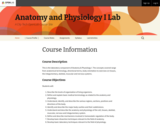
This is the laboratory component of Anatomy & Physiology I. The concepts covered range from anatomical terminology, directional terms, body orientation to exercises on tissues, the integumentary, skeletal, muscular and nervous systems.

This lesson covers plant processes including photosynthesis, respiration, and transpiration. This represents a portion of the Introduction to Agriculture, Food, and Natural Resources (AFNR) series in Nebraska middle and high school agricultural education.
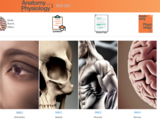
This is a full Common Course Cartridge shell for BIO 201 Anatomy & Physiology I.Updated July 2023: Updated the labs and added homework from OpenStax Assignable.
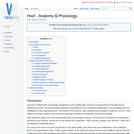
The hoof is defined from a physiologic perspective as the modified skin covering the tip of the digit and all enclosed structures. The hoof provides protection to the distal limb and is formed by keratinisation of the epithelial layer and modification of the underlying dermis. The keratin in the epidermis, when thickened and cornified, is referred to as horn. Horn makes up the outer surface if the hoof and is particularly resistant to mechanical and chemical damage.
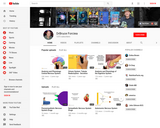
Short, animated videos on many Anatomy and Physiology topics. Videos used in college courses and cover the content presented in the first 2 semesters of Anatomy and Physiology for Nursing/Allied Health students.
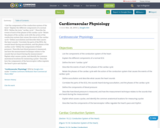
• List the components of the conduction system of the heart
• Explain the different components of a normal ECG
• Define the term “cardiac cycle”
• Describe the events of each of the phases of the cardiac cycle
• Relate the phases of the cardiac cycle with the action of the conduction system that causes the events of the cardiac cycle
• Define auscultation and describe what causes the heart sounds
• Correlate the parts of the ECG, the sounds heard during auscultation, and the phases of the cardiac cycle
• Define the components of blood pressure
• Describe how blood pressure is measured, and how the measurement technique relates to the sounds that are heard during the measurement
• Explain what causes a pulse, and identify the common anatomical locations for measuring a pulse
• Describe how the components of the baroreceptor reflex regulate the heart’s pace and rhythm

Lab Reference to accompany Openstax Anatomy & Physiology.
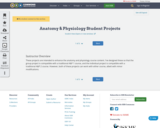
These projects are intended to enhance the anatomy and physiology course content. I've designed these so that the group project is coimpatible with a traditional A&P 1 course, and the individual project is compatible with a traditional A&P 2 course. However, both of these projects can work with either course, albeit with minor modifications.

Short Description:
Fundamentals of Anatomy and Physiology is a textbook for biomedical, life science and health majors. The book is organised by body system and contains interactive resources to test your knowledge.
Word Count: 416894
ISBN: 978-0-6487698-5-9
(Note: This resource's metadata has been created automatically by reformatting and/or combining the information that the author initially provided as part of a bulk import process.)

This page explains the planes and axes of animal physiology
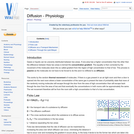
Gases or liquids can be unevenly distributed between two areas. If one area has a higher concentration than the other then the differance between these two areas is termed the concentration gradient. The equality is then corrected by the movement of the molecules down this so called gradient from the region of high concentration to that of low. This process is passive as the molecules do not have to be forced to do this and it is reffered to as diffusion.
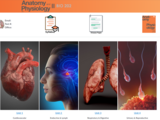
This is a full Canvas course shell for BIO 201 Anatomy & Physiology II.Updated July 2023: Labs have been updated and Homework was added using OpenStax Assignable.

OpenStax
Short Description:
An adapted and revised edition of the OpenStax Anatomy & Physiology (https://openstax.org/details/books/anatomy-and-physiology) with revised content and artwork, Open Oregon State, Oregon State University. Data Dashboard
Long Description:
An adapted and revised edition of the OpenStax Anatomy & Physiology (https://openstax.org/details/books/anatomy-and-physiology) with revised content and artwork, Open Oregon State, Oregon State University.
Word Count: 551108
(Note: This resource's metadata has been created automatically by reformatting and/or combining the information that the author initially provided as part of a bulk import process.)
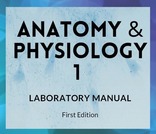
Laboratory manual for undergraduate Anatomy & Physiology 1

This anatomy & physiology lab manual is meant for a two semester course, covering every system of the human body. It contains lecture notes, labs, videos, and the online version has added activities and games.